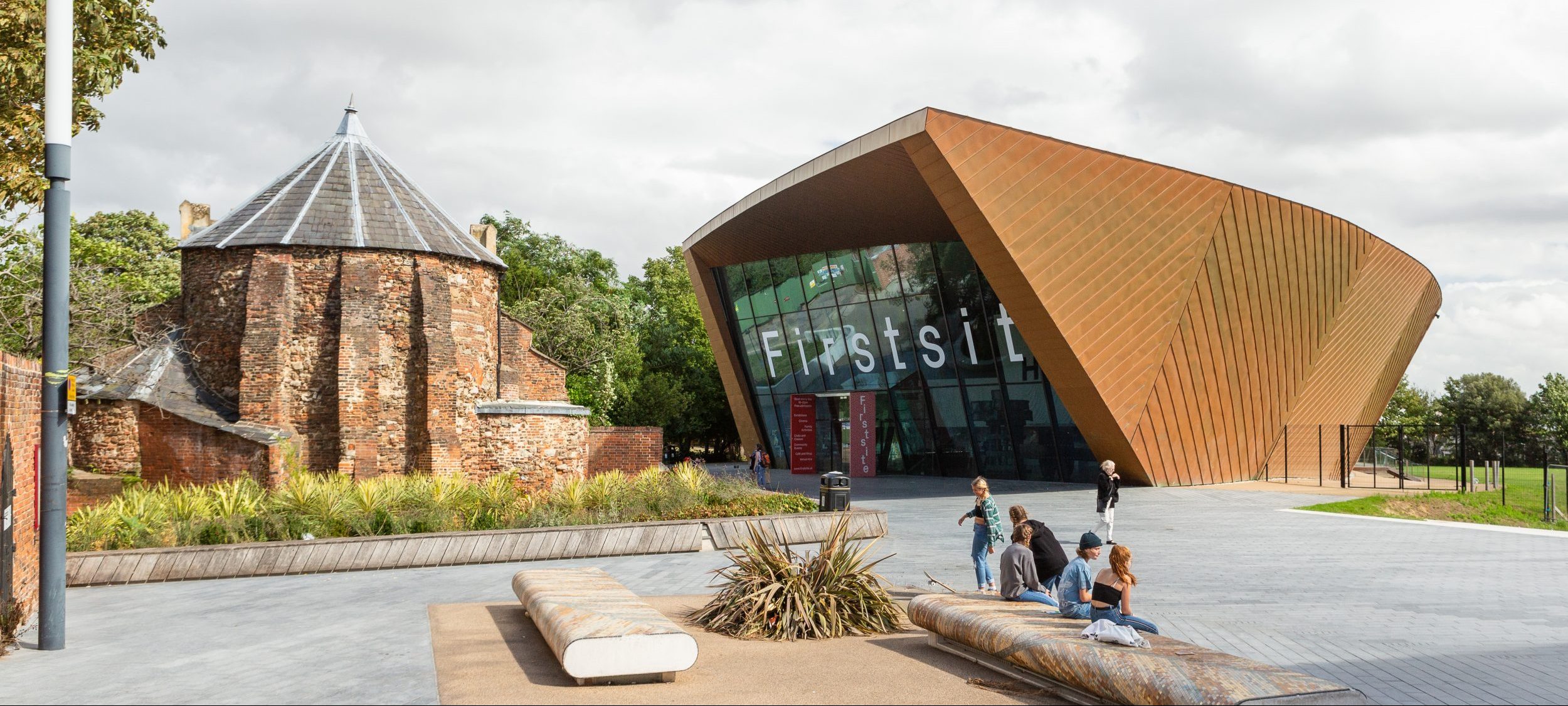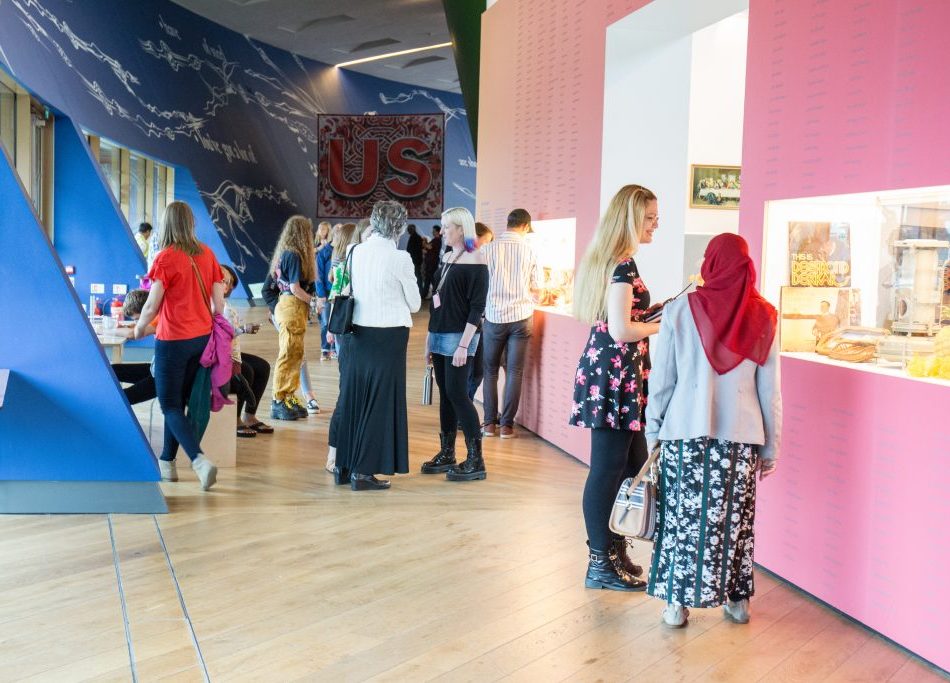Written by:
Reflections on: this year’s winner of the Art Fund Museum of the Year Award, creating places that are venues for ongoing action and social impact, and what we can learn from a cross-industry perspective.
The recent announcement of the winner of the Art Fund Museum of the Year Award for 2021 – Firstsite, in Colchester [1] – got me thinking. Doing a bit of desk research, it seems that the building itself is controversial [2] and innovative [3] in equal measure. It’s certainly eye-catching. But reading what Firstsite have been doing – and why they won the award [4] – is truly inspiring.
Their focus on serving communities is a reminder that the important thing is not that we have these venues per se, but what these venues choose to do with their spaces, collections and commissions that makes a difference to people’s lives. Can we regard Firstsite – the architectural competition was won by Rafael Vigñoly back in 2004 – as an interesting example of how society may have matured in the last 17 years? Have we moved from a desire for ‘Bilbao effect’ venues – where iconic architecture is meant to act as an immediate audience-magnet to culture and instantly elevate cities to ‘world-class’ status – to prioritising a venue’s behaviour and the deeper relationship it has with surrounding communities? (I’m interested to know if the building design process for Firstsite involved any co-design methodology. Research for another time perhaps. Worth noting that, with Firstsite, it seems to have been a shift of focus towards being more relevant to local communities that turned its fortunes around in 2015 when it was facing an uncertain future.)

I was reminded of when, about eight years ago, I had the good fortune to work on some early-stage workshops for the redevelopment of St Fagans National Museum of History in Wales, which itself went on to win the Art Fund Museum of the Year in 2019 [5]. My time working with the museum’s team is one of my fondest memories of my 25 years working in design. Their passion and commitment to applying a participatory approach for the redevelopment, and generally rekindling the ‘radical spirit’ that initially gave rise to the founding of St Fagans in 1948, has stayed with me as a reminder of why I steered my career towards working in the museum sector.
Museums, galleries, and the arts sector generally, have had a tough time over the last 18 months. However, it does feel a little as if the Covid pandemic has brought into sharper focus the opportunity – perhaps obligation – for museums and galleries to ‘walk-the-walk’ when it comes to having ‘public purpose’ or social change as part of their vision and mission.
This brings me on to my last reflection. When I was working on the St Fagans project, Nina Simon’s book ‘The Participatory Museum’ [6] was relatively fresh on our minds having been published a few years earlier. Yet, what I still find interesting about that book is the large number of case studies and references to projects outside the museum sector. In some ways, it is a great advocate for the value of cross-industry learning [7]. There is so much to be learned by looking beyond what’s happening in one’s own sector. And the museum sector can at times seem a tad slow to catch up. After all, is the ‘co-design’ that has gained momentum in the museum sector an adaptation of Design Thinking and Human-Centred Design methodologies that have been practised in the commercial sector now for decades?
Competing and evolving jargon aside, the basic premise is that it generally makes sense to engage people in creating things that are intended for their own benefit – and get them involved early. It’s obvious, yet it’s also surprising how little of it happens. Or more precisely, how little of it happens early on in the process. There’s often a sense that audience engagement is something that will take place ‘further down the line’, perhaps to ‘participation-wash’ a funding application rather than to really steer the direction of a project. And there are obvious practical barriers to adopting some processes. It’s easier to rapid prototype and iterate a digital app than it is a 500sqm gallery space, for example! [8]

Where might all this point to? I’m not sure. But I’m encouraged by the idea that there is often more than one correct way of doing things, and that by experimenting with what works in other sectors we can innovate to suit our own sector. The challenge might be in finding the best fit in all the available options and having the time (and budget) on projects to experiment.
I wonder, for example, what the benchmarks are for places that have been both co-created as well as having the ongoing programming and utilisation of their spaces co-created. How would they be evaluated to convince others that this way of doing things is worth the effort? How might more recent ideas like Participatory Futures play out in this sector? [9] There’s lots going on to be aware of and optimistic about, and the exemplars to learn from seem to keep on growing – the latest being Firstsite.
Stuart Sang is a freelance creative consultant, now specialising in visitor experience for museums and heritage attractions but with ‘a past life’ in the more commercial worlds of branding, shopper marketing and retail interior design.
References
- Firstsite Website
- Firstsite – review, The Guardian
- Firstsite Colchester, AKT-UK
- Firstsite, Art Fund
- St Fagans National Museum of History wins Art Fund Museum of the Year 2019, Art Fund
- Nina Simon’s website
- This little book is a great reference: https://www.crossindustryinnovation.com/
- That said, I remember talking to a design company that was mocking up, full scale, more or less the entire ground floor of a hotel in a warehouse space in order to test the design! Makes financial sense to get it right before rolling out the design globally.
- See for example – Participatory Futures: Integrating Public Voices in Futures Thinking and also Participatory futures, via Nesta
